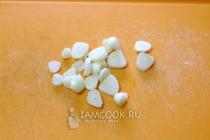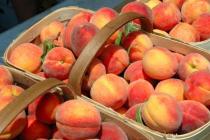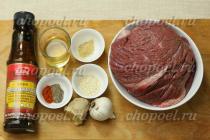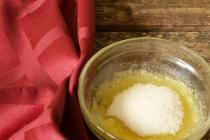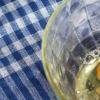Explanation.
Regularity and unchanged repeatability from year to year in the year of change of the length of the daylight allowed organisms during evolution to coordinate their most important life processes with the rhythm of these time intervals. Under the photoperiodic control there are almost all metabolic processes associated with increasing, development, livelihoods and reproduction of plants and animals. Seasonal rhythm of animals is most pronounced in the change of plumage in birds and wool in mammals, periodicity of breeding and migration, winter hibes of some animals, etc.
It is known that the most favorable time for the appearance of the offspring in animals is the time of year when there is a sufficient amount of feed. So, the ovaries and the doves of the dove of Vykhiry are beginning to ripen when the duration of the day exceeds 12 hours, i.e. the ability to multiply it, therefore, reaches Mai. The SIZE is the same pigeon for the ripening of the sex glands requires a 9-hour day day, so this bird is ready for mating 2-3 times a year. The difference in the breeding time is due to the fact that Vychira is powered mainly by the grain of late ripening cereals, and the SIZY PONT - existing in abundance of weed seeds everywhere. At the same time, the city dove is rich food finds in street garbage practically at any time of the year, therefore he does not have a preferred reproduction time. A similar situation occurs in other domesticated animals.
Similar photoperiodic regulation of the time of appearance of a new offspring is characteristic of most of the mammals. In addition to animals with the long-term type of FPR (most common), animals with a short-daily type of FPR are found. At the same time, those whose pregnancy continues for a long time, and the offspring is born from the spring mating long before the onset of autumn cold. For example, in goats and sheep, the fruit is developing 5-6 months, and the deer and roe deer - about 9 months and mating occurs at the end of summer or in the fall. The increase in the size of the genital glands and their full ripening they begin with the onset of short days. Thus, the mating at the roe takes place in July-August, but the fertilized egg is not introduced into the mucous membrane of the uterus and does not develop. It is also performed only in the second half of December, and the offspring appears in May, when around the abundance of fresh green plants. The slow motion introduction of the fertilized egg is also observed in seals, bears, badger and some samples.
The correct answer is specified at the number 4.
Ecology is one of the main components of biology, which studies the interaction of the environment with the organisms. The medium includes different factors they can be both physical and chemical. Among the first can be called air temperature, sun rays, water, soil structure and its layer thickness. The factors of inanimate nature also include the compositions of the soil, air and soluble in water. In addition, there are also biological factors - organisms that live in such a terrain. For the first time, they began to talk about ecology in the 60s of the last century, it originated from such a discipline as a natural history, which was engaged in observations of the organisms and their description. Further, the article will describe various phenomena forming the environment. We also find out what factors are inanimate nature.
general information
To begin with, we define why organisms dwell precisely in certain places. Naturalists were set by this issue during the study of the globe, when they constituted a list of all living beings. Then two characteristic features were revealed, which were observed throughout. The first - in each new area defines new species that were not previously detected. They replenish the list formally registered. The second is, regardless of the growing number of species, there are several basic types of organisms that are concentrated in one place. So, biomes are large communities that live on land. Each group has its own structure in which vegetation dominates. But why in different parts of the globe, even at a huge distance from each other, can I meet similar groups of organisms? Let's deal with.

Human
In Europe and America there is an opinion that a person is created to conquer nature. But today it has become clear that people are the component of the habitat, and not vice versa. Therefore, society will survive only if the nature (plants, bacteria, mushrooms and animals) will be alive. The main task of humanity is to preserve the Earth's ecosystem. But in order to decide how it should not be done, we need to explore the laws of interaction of organisms. Factors of inanimate nature are of particular importance in human life. For example, it is no secret as the solar energy is important. It ensures the stable flow of many processes in plants, including cultural. They grown by man, providing themselves with food.
inanimate nature
In areas that have a constant climate, the biomes of the same type are inhabited. What factors of inanimate nature exist at all? Find out it. The vegetation is determined by the climate, and the appearance of the community is due to vegetation. The factor of inanimate nature is the sun. Next to the equator rays are vertically falling on the ground. Due to this, tropical plants receive more ultraviolet. The intensity of the rays that fall in high latitudes of land is weaker than near the equator. 
The sun
It should be noted that due to the inclination of the earth's axis in different areas, the air temperature changes. In addition to the tropics. The sun is responsible for the temperature of the medium. For example, due to vertical rays, the heat in tropical areas is constantly held. In such conditions, the growth of plants is accelerated. Temperature fluctuations affect the species diversity of one territory.
Humidity
Factors of inanimate nature are interconnected with each other. Thus, humidity depends on the amount of ultraviolet obtained and on temperature. Warm air saves water vapors better than cold. During air cooling, 40% of moisture condenses, dropping to land in the form of dew, snow or rain. In the region of the equator, warm air flows rise, thinned, and then cooled. As a result of this in some territories, which are located near the equator, precipitation falls out in a huge amount. Examples can be considered the Amazon pool, which is in South America, and pool in Africa. Due to the large number of precipitation here there are tropical forests. In areas where air masses are absorbed to the north and south at the same time, and the air, cooling, again falls on the ground, stretched the desert. Further north and south, in the latitudes of the United States, Asia and Europe, the weather is constantly changing - due to strong winds (sometimes from the tropics, and sometimes with the polar, cold side).

The soil
The third factor of inanimate nature is soil. It has a strong impact on the distribution of organisms. It is formed on the basis of a destroyed indigenous breed with the addition organic substances (dead plants). If there is no required amount of minerals, the plant will be poorly developed, in the future may die at all. The soil is of particular importance in human agricultural activities. As you know, people grow different cultures, which are then eaten. If the soil composition is unsatisfactory, then, accordingly, plants will not be able to get all the necessary substances from it. And this, in turn, will lead to the loss of crop.
Wildlife factors
Any plant is not developing separately, but interacting with other representatives of the medium. Among them are mushrooms, animals, plants and even bacteria. The relationship between them may be the most different. Starting from benefit to each other and ending with the negative influence on a particular body. Symbiosis is a model of interaction between a variety of features. In the people, this process is called "cohabitation" of different organisms. Important importance in these relations have factors of inanimate nature.

Examples

Interspecific competition
ATTENTION, only today!All interesting
Kingdom - Next After Domain Stage of Classification biological species. At the moment, scientists allocate 8 kingdoms - chromists, archaeys, protists, viruses, bacteria, mushrooms, plants, and animals, while controversy continues on the scientific environment.
Live Organisms B. natural conditions Live not isolated from each other. Each organism surrounds many other representatives of wildlife. And they all interact anyway anyway. One of the types of biotic interaction ...
The natural community (biocenosis) is the unity of living and inanimate nature, sampled under certain environmental conditions. In these communities, each individual body has a certain way affects everyone else, and also experiences them ...
All environmental factors act not in itself, but a whole complex. The action of one of them depends on the level of the rest. The influence of environmental factors, the body reacts to adaptive reactions called adaptation, and ...
From birth, we are surrounded by nature, its beauty and wealth form the inner world of man, cause admiration and approval. What to say, we ourselves also part of it. And along with animals, birds, plants are the components of the so-called ...
Each body, population, type there is a habitat - that part of nature that surrounds all living things and has any impact, direct or indirect on it. It is from her organisms take everything you need to exist in it ...
Living organisms interact with each other with the outside world, and this is their habitat. One of the factors affecting live and non-living nature is also a person. Depending on the form of impact on living organisms divided ...
The environment in one way or another affects living organisms that live in it. This impact may have a direct or indirect character. All elements of the medium that surrounds us, affecting living organisms, make up ...
Ecology
Ecology studies the relationship between individual organisms with a habitat - intraspecific, interspecific relationships, the influence of non-living factors. It studies life at levels more complex than the organism - population-species, biogeocetic and biosphere. The term "ecology" suggested Geckel in 1866.
The main tasks of the ecology:
The most important task is to study the effect on the body of various environmental factors - light, temperature, humidity, etc.
On the population-species level, the ecology studies the relationship between organisms in the population, the dynamics of the number, the nature of the change in sexual and age composition, predicts the future of the population and the species as a whole.
At the level of natural communities - biogeocenoses - ecology studies nutritional relations between organisms, cyphans of substances and energy movement, self-regulation mechanisms, laws for which the development and change of communities occur.
At the biosphere level, environmentalists explore the spread of life in various geological shells of the Earth, the influence of living organisms on non-living nature, live matter functions and the evolution of the biosphere.
Applied ecology is the greatest practical importance - the study of human impact on the environment, on non-living nature and living organisms. Ecology is the theoretical base of nature of nature: preservation of the atmosphere, soil, hydrosphere, vegetable and animal world.
Environmental control over enterprises, water, atmosphere, helps to preserve the health of people and the nature around us, an environmental strategy in construction as industrial. So household objects helps to create the most favorable conditions for the lives of people.
Environmental factors.
The body has an impact of a large set of environmental conditions. Separate components of the medium that provide direct or indirect effects on the body are called environmental factors.
All environmental factors are divided into three large groups: abiotic, biotic and anthropogenic.
Abiotic factors - conditions of inanimate nature: light, temperature, humidity, pressure, etc.
Anthropogenic factors - the result of the direct impact of a person on the organisms (cutting down of forests, hunting) or its indirect effect (the contamination of the atmosphere is destructive effect on many plants).
The maximum number of individuals prefers the optimal intensity of the factor, with decreasing or increasing its intensity of the individual, are first in the zone of normal life, then in the zone of oppression, and, finally, when reaching the lower and upper limits of stamina, their death occurs.
But the body has a complex of factors, and if the intensity even one factor goes beyond the endurance, the body dies.
The factor whose value is approaching the endurance limits of the body is called a limit or limiting factor. The first idea of \u200b\u200bsuch factors has nominated in 1840 by Chemist Justus Lubi.
Living organisms are able to transfer certain changes in the intensity of each abiotic factor. Moreover, some organisms are able to endure changes in factors over wide limits and are called episcion, others withstand intensity fluctuations in very small limits and are called shutto.
Optimum and endurance limits to one factor depend on the intensity of other factors: for example, the fusion animal is easier to carry low temperatures. Or - at a constant low temperature, the change in air humidity changes the intensity of heat transfer from the surface of the skin.
Abiotic environmental factors.
Shine. This is the main abiotic factor that suppresses energy for the livelihood of photoauthotrophic organisms and ensures the synthesis of most of the organic matter on Earth, as well as supporting a certain temperature on the ground surface. For living organisms, the light of the ultraviolet part of the spectrum, visible light and infrared radiation is most important.
The hard ultraviolet with a wavelength of less than 290 nm is destructive for living cells, it does not reach the surface of the earth, because Reflected by the ozone screen. A soft ultraviolet with a wavelength from 290 to 380 nm carries a lot of energy and causes the formation of vitamin D in the skin of a person, it is also perceived by the organs of vision of many insects. Visible light with a wavelength from 380 to 750 nm is used for photosynthesis by phototrophic organisms (plants, photosynthetic bacteria, blue-green algae) and for animal orientation.
The infrared part of the solar spectrum (thermal rays) with a wavelength of more than 750 nm causes heating items. This part of the spectrum for animals with non-permanent body temperature is especially important. The amount of energy that bears light is inversely proportional to the wavelength, i.e. The least energy is infrared rays.
Plants for photosynthesis mainly use blue and red rays. In relation to the light, they are commonly divided into light-minded (steppe plants), shadowless (most forest-forming breeds) and shadow (moss, ferns).
The duration of the daylight is an important regulatory factor in the life of organisms. Seasonal and daily changes in the physiological activity of living organisms in response to changing the duration of the day and the night are called photoperiodism.
The length of the daylight, unlike other abiotic factors, is changing strictly natural for each locality. The physiological functions of organisms are regulated by the duration of the daylight. If it is artificially supported for more than 15 hours, our deciduous trees are becoming evergreen, and if in the spring with the help of a screen to arrange an autumn day (less than 12 hours), their growth is stopped, they are discharged by the foliage, and they are the state of winter peace.
The adaptability for a seasonal change in the duration of the daylight led to the appearance of long-term and short-lasting plants. Long-day blooms at the beginning of summer, before autumn they have time to coast fruit and seeds (rye, wheat, oats), short-day (asters, dahlias, chrysanthemums) - plants of southern origin, where the duration of the day is about 12 hours, so they bloom from us when Short day in autumn.
In animals in the second half of summer and in the fall, the fat stocks and autumn molting occur. Washing and migratory species begin their seasonal migrations. In the fall of insects, wintering stages are formed. For example, a butterfly camouflage winter at the stage of a pupae, and if the caterpillars in the spring contain at the length of the day shorter 14 hours, then the winter doll will be formed by the middle of the summer, which will be in a state of resting several warm months.
Temperature. This is the most important and frequently limiting abiotic factor for many organisms. The vital activity of most organisms is limited to the temperature range from 0 to 40 o C, but some organisms live in hot geysers, at a temperature of 70 o C.
Many are able to transfer negative temperatures in an inactive state. In order to carry adverse temperatures, various fixtures have developed in plants and animals:
The warmth of birds and mammals relieves the effect of small temperature fluctuations. Animals capable of constantly maintaining the temperature at a certain level are called homootherm, not capable - causticothers.
A row of animals has a winter hibernation, for example, rodents, bats. In this case, they dramatically slow down the intensity of metabolism, the frequency of respiratory movements and the heart rate decreases, the body temperature decreases.
For many animals, winter sleep is characteristic. In the autumn, animals accumulate a large amount of fat stocks and fall asleep for several months. It does not occur in a deep change in metabolism. An animal can be wake up, for example, a bear in Berorga. Such a condition helps to move the absence of food in the winter.
Many simple and invertebrates under adverse conditions are able to fall into anabiosis - the temporary state of the body, in which all life processes are slowed down to a minimum and there are no visible signs of life.
Perennial plants, there is a state of winter rest, which is directed to the transfer of low temperatures. Plants accumulate various "antifreezes" so that in the cytoplasm of cells, ice crystals were formed and cell structures were not destroyed.
For many early plants (tulips), as well as for freshly collected seeds, tubers, luckers are characterized by the state of summer peace. Summer peace is observed in desert animals during the roast and dry period (in some rodents, turtles).
Humidity is also an important environmental factor. Live organisms adapted to seasonal change in humidity and to life in areas with different water content in the soil and air. The plants of arid zones, xerophytes, have small tight leaves with well-developed cuticle, long roots, high osmotic pressure in cells. Succulents (cacti, agaves) have a strongly developed water-based tissue, their leaves are reduced to spines and photosynthesis goes at the expense of the stem, the root system is located at the surface and allows you to stock large amount of water in wet periods. Efemers are annual plants, have time for a short wet period to fond and form fruits and seeds. Efemeroids - perennial plants, the bloom of which occurs in early spring, and in summer, the above-ground shoots completely die away, the arid period they carry under the ground in the form of bulbs, tubers, rhizomes. Gigrophytes adapted to excessive humidity and grow near the water bodies, they have large leaves with a large number of wellheads and a weakly developed cuticle, a weak root system.
Animals also adapted to life in conditions with different humidity. To preserve moisture in the body in the conditions of its deficiency, many animals lead a night lifestyle, have dense covers and reduced sweating. Some animals are enough water, which is contained in food (kangarov rat), a number of others can do without water for a long time using metabolic water (camels). Many animals of steppes and deserts can carry the lack of water and high temperature, falling into a state hibernation.
Biotic environmental factors
Under biotic factors understand the variety of organism with other organisms. Such links may be intraspecific and interspecifications. Intrusual relationships are diverse and ultimately aimed at preserving the population. This includes the relationship between individuals of different floors, competition for life resources, various forms of behavior.
There are several forms of interspecific interactions: they may be neutral, useful or harmful to partners.
Classification of biotic interactions
(00 - neutral, + - - useful, - - harmful).
|
Type of interaction |
The overall nature of interaction |
||
|
1. Neutralism |
No population does not directly affect the other (tits and mice in the forest). |
||
|
2. Amenzalism |
The form B suppresses the view A, but he himself does not have a negative effect (tree and grass under it). |
||
|
3. Commminasalism |
Commune (view A) is beneficial from another species to which this uniform is indifferent (fish - adhesive and shark). |
||
|
4. Competition |
The success of one means fails of another (wolves and foxes compete for food). Often leads to the oss of one species to others. |
||
|
6. Predation |
Predators (view A) are powered by their victims (view b). |
||
|
7. Protocooperation |
The interaction is favorable for both species, but not necessarily (acting and cancer - hermit). |
||
|
8. Mutualism |
Interaction is favorable for both species and necessarily (termites and flagellasts). |
||
Various forms of joint existence of organisms of different species are called symbiosis. For partners, it can be both useful and harmful. Often under symbiosis understand the mutually beneficial cohabitation of organisms, for example, mycorrhosis is a symbiosis of some fungi with plant roots, symbiosis of non-green bacteria with roots of leguminous plants.
Incidental factors that are important for plants are light, temperature, water availability, air gas composition, soil. Although we consider each of them separately, it should be remembered that they act on the plants all together and at the same time. Therefore, plants growing in a certain place are adapted to the total action of all environmental factors.
Light, or light energy in the form of sun rays, is necessary for all living beings. The energy of light brings heat and is absorbed by plants in the process of photosynthesis. With insufficient illumination of the plant have excessively elongated interstices, thin weak stems, small pale green leaves.
Compare appearance Pines grown in the depths of the forest and in an open place. At pines growing in the forest, the trunk is tall and slim, the green crown is located on its top, and the lower branches do not stand the shaders and gradually die away. Pines growing in an open, lush crown, the trunk is less high and slim, and the lower branches are located closer to the ground.
The degree of illumination affects the internal structure of plants. In particular, in pines growing in conditions of shading, mechanical fabrics are weaker, and therefore their elongated young stems are more brittle.
One of the most important environmental factors is the duration of the day of the day. While humidity, temperature and other factors may vary widely, the duration of the day of the day in this place and in the given day from year to year remains constant. Life cycles of all organisms are adapted to the action of this factor. Changes in the duration of the light period of the day affect the speed and duration of growth, flowering, leaf fall.
The reaction of organisms to changes in the duration of the day of the day throughout the year is called photoperiodism. In the spring, when the duration of the light period of the day increases, the growth and development of plants increases. In the fall, when it decreases, on the contrary, the processes of vital activity are braking and the plants go to rest state.
In different types of plants, the need for the degree of illumination is various. Light-loving plants (nickname, tulip, pine ordinary) settle on open, well-lit places, and the teothelubile (spruce, hoofing, plane-like) - on the shaded areas. Telebobile plants have different growing devices under conditions of constant shaders and are able to capture the scattered light due to dark green leaves containing a lot of chlorophyll. Shadowish Plants (Grab, Lipa, Lilac), grown in the forests, can carry a certain degree of shaders, but are able to set on open, well-lit spaces.
Water, as you already know, are necessary for plants for the implementation of processes of vital activity (root food, photosynthesis, vehicles of substances, evaporation). Water is the main component of any cell and takes part in a variety of metabolic processes. For many organisms, it is a habitat.
Depending on the need for water distinguish different groups of plants. Thus, higher plants that can not exist outside the aqueous medium, are called higher water vegetation (Elday, ripples, pita). Moofable plants (Cukushkin Len, Sfagnum, Rosyanka, Reed) grow along the coast of water bodies (or partially immersed in water), in wet forests, on the swamps. They can only exist under the condition of high soil moisture, even with a short lack of water, these plants are withering and may die.
Drought-resistant plants (cacti, Kickl, Ticaccus, MEDO) are distributed in dry places. They have a variety of adaptations for survival in a continuous lack of water. These devices are associated with a decrease in water evaporation by a plant. These include modifications of leaves in the spines, the wax layer on the surface of the above-ground parts, the ability to accumulate water in different organs (stems - cacti, leaves - MEDO). In hot weather, the leaf plates of many plants turn to the sun by a rib or fold along the axis.
The root system of drought-resistant plants or is able to penetrate a significant depth, where there is water (the pine ordinary, camel barrel), or is located in the surface layer of the soil and occupies a significant area (cacti). In the latter case, the plants absorb water during short-term rains.
Many plants carry a dry period in an inactive state. At the same time, they are discharged by the foliage, reducing the evaporation of water, or their above-ground part die away, and only modified underground shoots (rhizomes, bulbs) remain. Such adaptations are characteristic of many herbatous plants (Lily, onion).
Under the conditions of medium moisture, oak, birch, linden, rye, wheat and many others are growing. These species are able to experience a short drought.
Temperature. It is known that an increase in temperature to a certain level accelerates, and the decrease, on the contrary, inhibits the intensity of the processes of the vital activity of organisms. But too high temperatures adversely affect plants and can even cause their death.
The spread of certain types of plants in different parts of the planet is affected by both the average annual temperature and its seasonal oscillations. Each type of plants is adapted to grow in a specific climatic zone. There are species that can withstand long-term frosts over -50 ° C (Larch Dauroskaya), most tropical plants cannot even survive a short-term decline in temperature below +4 ° C.



